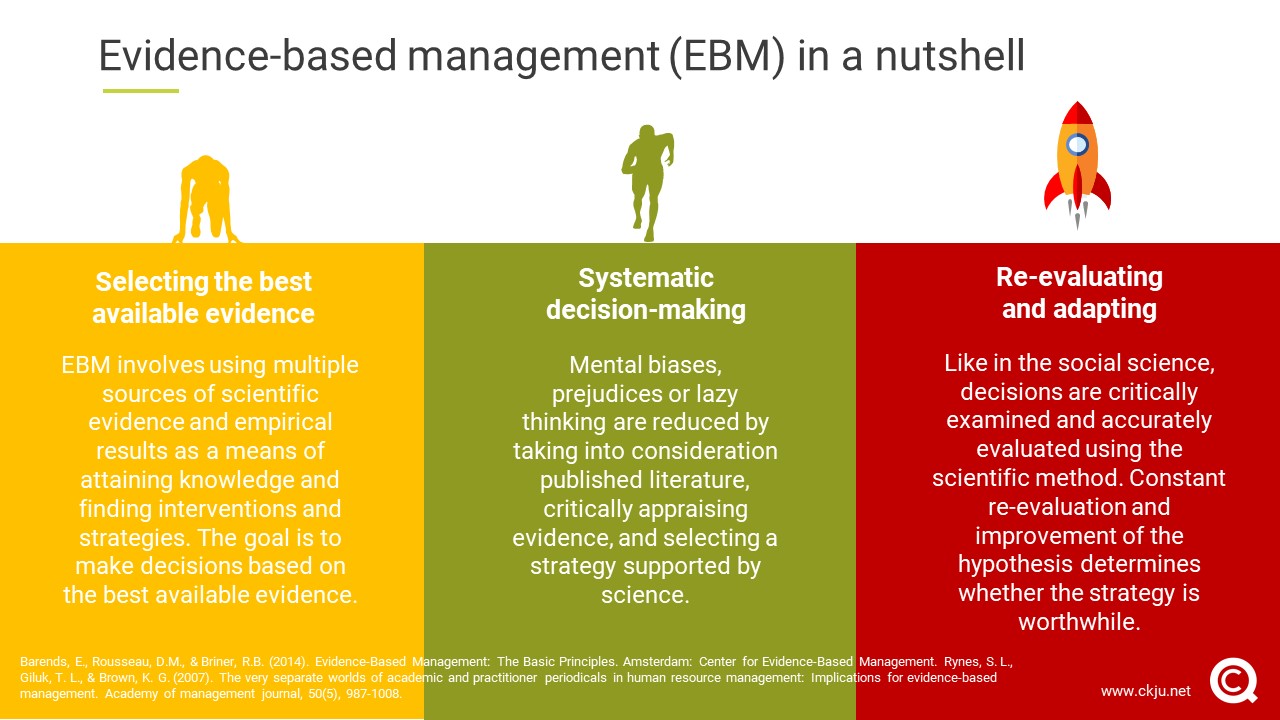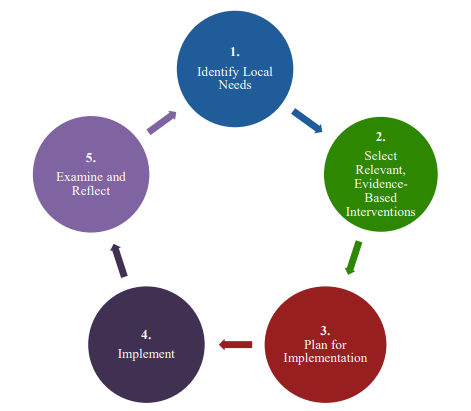

- EVIDENCE BASED DECISION MAKING EXAMPLE HOW TO
- EVIDENCE BASED DECISION MAKING EXAMPLE SOFTWARE
- EVIDENCE BASED DECISION MAKING EXAMPLE PROFESSIONAL
This could be from data collected through specific software or key performance indicators. Health and safety practitioners will also need to understand how any decision fits within the context of current legislation.
EVIDENCE BASED DECISION MAKING EXAMPLE PROFESSIONAL
This information should come from academic studies from various scientific disciplines, but could also come from information in professional publications or attending conferences. If, based on the evidence, a decision is taken to introduce the scheme, then it is important that data is also collected to review its success.ĬEBMa sets out four areas for collecting evidence: The data might show that cycle-to-work schemes can be highly effective - but only if the workplace is close to cycle-friendly routes and if there are suitable facilities for changing. Using the data to drive the decision-making process and assessing the success of the decision. For example, what do scientific papers tell us about the impact of cycle-to-work schemes?

It is useful to set out questions that the data needs to answer. For a cycle-to-work scheme, data might include benchmarking with similar organisations, internal staff surveys and interviews with key personnel, a literature review, and speaking with consultants that specialise in active commuting programmes. More information is below, but data collection should be as wide and varied as possible. Gathering and appraising data: systematically acquiring data, critically reviewing how useful it is, and then aggregating it.
EVIDENCE BASED DECISION MAKING EXAMPLE HOW TO
First, the assumption around staff wellbeing needs to be explored to find out in what ways employee wellbeing is an issue, for example, asking how employee wellbeing affects the company? Assuming that staff wellbeing does need to be addressed, the next set of questions need to focus on how to improve staff wellbeing more widely, including whether a cycle-to-work scheme will help. For example, an organisation might perceive that a lack of physical activity is impacting on staff wellbeing, and senior management believe that introducing a cycle-to-work scheme will remedy this. Using this definition, evidence-based practice follows a clear model.Īsking the right question: ie taking a practical issue and translating it into a tangible question that helps get to the bottom of the problem. “Multiple sources” - not just taking data from one place. “Judicious” - taking a critical view of the quality of the evidence to assess how reliable and useful it is. “Explicit” - being clear about what the evidence is and where it has come from. “Conscientious” - time and resources are put aside to find the evidence. Some of the key points of this are as follows: The Center for Evidence-Based Management (CEBMa) defines evidence-based practice as the process of “ making decisions through the conscientious, explicit and judicious use of the best available evidence from multiple sources”. In the first example, it will mean we are more likely to get a car that suits our needs and, in the second example, it will help us focus efforts on areas of health and safety that need urgent attention.ĮBDM provides a structured approach to making decisions that helps identify the problem that needs to be solved, the types of evidence that is available, and how this can be used. The reason why we use data is clear - it helps us make more informed decisions, improving the chance of a positive result. We all use evidence to make decisions - for example we research whether to buy an electric car or look at internal near-miss data to review safety policies. By doing so, a practitioner can avoid pitfalls such as anecdotal experience, personal bias, “best practice” based on a one-size-fits-all approach, or unproven assumptions. In these areas, EBDM is often referred to as evidence-based management or evidence-based practice.Īt the centre of EBDM is the idea that in order to make a good decision it is necessary to blend critical thinking with a systematic and thorough review of available information to arrive at a conclusion. For some years it has been adopted by medics, but it is increasingly being used in other professional spheres to help make better decisions by collecting and using the best evidence available. Here, Laura King explores how business leaders can use evidence to make better decisions.Įvidence-based decision-making (EBDM) is not new. Never have we heard more about decision-making “being guided by the science”.


 0 kommentar(er)
0 kommentar(er)
